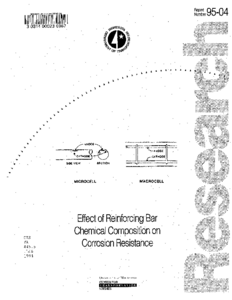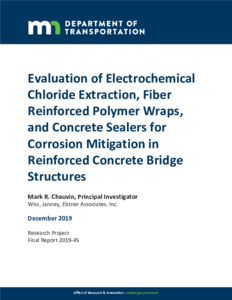Displaying results 1 - 10 of 19
Phased Array Ultrasonic Steel Corrosion Mapping for Bridges and Ancillary Structures
Date Created
2017
Report Number
2017-33
Description
Corrosion Protection Performance of Epoxy-Coated Reinforcing Bars
Date Created
2008
Report Number
2008-47
Description
Maintenance Painting for Steel Bridges: Evaluation of Coating Systems Over Minimally Prepared Surfaces to Delay Rehabilitation
Creator
Date Created
2019
Report Number
2019-37
Description
Evaluation of Electrochemical Chloride Extraction, Fiber Reinforced Polymer Wraps, and Concrete Sealers for Corrosion Mitigation in Reinforced Concrete Bridge Sructures
Creator
Date Created
2019
Report Number
2019-45
Description










